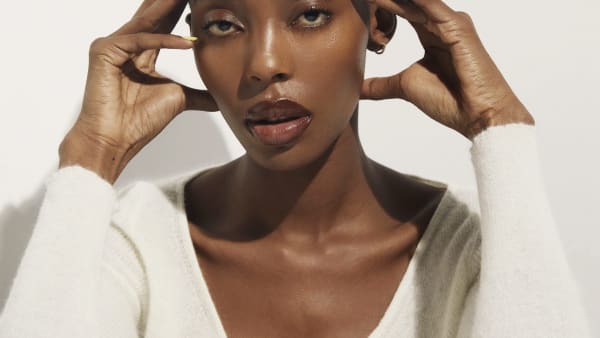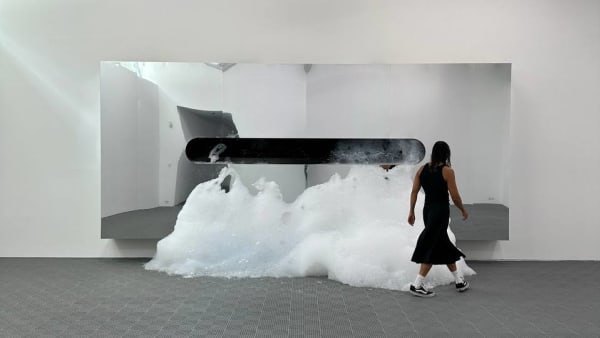

‘Growth and destruction:’ Âme on AI, Innervisions, and entering the NFT space
The long-running Berlin label celebrate its 100th release with a new NFT collection–we catch up with Âme and AI experts to see if NFTs can live up to the hype
Over ten years, Innervisions has evolved from a record label to a multi-faceted project interested in developing new avenues for creative expression.
Innervisions’ 100th release–an EP by label veterans Âme titled The Witness–has arrived not only in vinyl and digital form, but also with a debut NFT collection launched this weekend.
Created in collaboration with visual artists Claudia Rafael, Pascal Wiemers and technologists Dr. Joseph Turian AKA Spooky Audio and Dr. Nicolas Pinto AKA Proper Brother, the collection consists of four versions of the EP’s lead single “The Witness,” in which the voice of Karynn, the vocalist featured on the EP, has each been replaced with a deep fake of version of Yoko Ono, Debbie Harry, Maryam Mirzakhani, and Valentina Tereshkova’s voice.
Current machine learning technology enables the cloning of voices to produce a variety of music, which in turn raises questions of ownership and distribution–especially in a time when new structures powered by blockchain technology and smart contracts can allow for artist royalties to be paid almost instantly. Meanwhile, NFTs–short for “non-fungible token”–may have come to be known by many through the traditional auction system, with headline-grabbing artworks by creators like BEEPLE that sold for 60 million dollars. Beyond the hype, blockchain technology presents an opportunity for artists to build a social, collaborative layer with their communities.
Here we speak to Âme, Dr. Turian, and Dr. Pinto about new modes of music-making through artificial intelligence, decentralizing decision-making processes, and the creative implications of vocal fakes.
This element will show content from various video platforms.
If you load this Content, you accept cookies from external Media.
The Witness marks 8 years since Tatischeff, Âme’s most recent single on Innervisions. What prompted the return this year?
Âme: We’ve wanted to make an EP for a long time, but our 2018 album Dream House took roughly two years. Reducing our travels and increasing our studio time made us realize the perhaps overdue task of contributing Innervision’s 100th release.
Why are you entering the NFT space right now?
Âme: We’ve been talking for quite some time about the technology itself, about how we can incorporate it into our label structure. What it means to us as a music label, what risks it might bring in the future, the value of music and art in this context, ecological perspectives and how we could enrich a musical release with it. Before each release, we enter into a close communicative exchange with the respective artist to find out what they want, how we can shape our collaboration for the release and try to surprise our fans.
From our various conversations, it has emerged that there is a certain curiosity on the part of the artists to offer music and art as an NFT, which is why we have decided to take this step.

Tell us about your collaborators Claudia Rafael and Pascal Wiemers–what do they bring to the project from an aesthetic perspective?
So for example, on the vinyl front cover, you’ll notice a growing object that slowly eats through the vinyl back cover from release to release, ultimately destroying the Innervisions logo until all that’s left is a blank page–a starting point for new projects.
How does the NFT complement the record?
Âme: From our perspective, vinyl records and NFTs are two different ways of making a piece of music accessible. We decided to offer the NFT as an add-on to the usual ways of distribution, because we don’t want to close ourselves to new technologies and ways to offer music to our fans.
For every release, we try to think of something special that we can offer in addition to the music itself, including an NFT, which also offers new opportunities for collaborations and challenges us to think further in terms of interesting projects.
The NFT collection consists of four reworks of “The Witness,” which make use of artificial intelligence. When did you become interested in AI’s potential as it pertains to music-making?
Âme: Thoughts on topics such as AI or machine learning were primarily initiated by Dixon, who deals intensively with such technologies in his Transmoderna project.
This discussion and various collaborations later led to Claudia and Pascal, both of whom have shaped the visual identity of our publications based on AI.
During this process, there were many conversations about the technologies used and how they could be applied to other areas such as music. What finally led to the release of IV100 was working with machine learning and thinking about new ways to combine these new technologies with existing ones and transform them into interesting musical projects.
This element will show content from various video platforms.
If you load this Content, you accept cookies from external Media.
“Seek Deeper – Reach Further” uses a deep fake version of the voices of Debbie Harry, Maryam Mirzakhani, Valentina Tereshkova and Yoko Ono. What was the main drive to work with these voices in particular?
Âme: The main reason to choose these four personalities was a process of several meetings, in which we talked about inspirations and people who have positively influenced the three founders of Innervisions in some way. Furthermore, it was important to find sound sources of these people and then process them in a machine learning process. We understand the choice as a homage to the four chosen artists and personalities.
This year, Holly Herndon built a tool called Holly+ with which anyone can make music with her own voice. Is this something you can imagine doing for Innervisions in the future? In other words, are you planning to decentralize access, decision-making processes with Innervisions in the future?
Âme: As an independent music label, we try to remain open to new technologies in the future and overall not close ourselves to short-term sustainable changes, which we accept as the basis of an internal process to bring about change. Things, like decentralization and decision-making processes, are themes that we have discussed in the process of our IV100. So we were faced with the decision to close the label or to open up new avenues. We decided for the second and are looking forward to new interesting projects in the future. If we see music as a kind of self-expression, we find there is nothing bad in learning an instrument or sing to express one’s feelings.
Do you think people’s perception of (visual) art is changing?
Spooky Audio and Proper Brother: Yes, we think people’s perceptions will change. But we think technology is purely an assistant for human artists, who will always be the final editors and curators in a crucial capacity. We do not espouse the radical viewpoint that technology will “replace” artists. We instead believe that the tech that has a real impact on art is Intelligence Augmentation (IA) not Artificial Intelligence (AI). Art appreciators simply want to experience art created by people, even if the AI is “perfect”. It’s the richness of human imperfection that makes art electrifying.
Artists who sell their work as NFTs have been criticized for contributing to an ecologically destructive, toxically libertarian culture; artists who make work with AI have drawn fire for normalizing the technologies that enable corporate surveillance and predictive policing. How would you respond to these criticisms?
Spooky Audio and Proper Brother: These are complicated topics, and it’s hard to do them justice with so few words here. We could deflect this question by saying “what about Instagram (Facebook), YouTube (Google), private flights, etc.”. Instead, we prefer to share where this technology is going, which people might not be as aware of.
We are quite excited about carbon-conscious blockchains as well as privacy-preserving AIs. These are areas of very active research and development, and include projects we contribute heavily to, including Blockchains like Chia, Cosmos, Tezos, and ETH2, and privacy AI companies like Perceptio (acquired by Apple) and Oasis Labs.
In a recent panel discussion, the artist Zola Jesus raised the concern that DAOs (decentralized autonomous organizations) can sometimes feel like corporations. I wonder if you have a fear of your audience dictating, demanding the direction your work takes and maybe expecting something in return. How do you feel about it?
Spooky Audio and Proper Brother: Technology’s involvement in the artistic process has greatly increased communication between the artist and their audience and created new forms of feedback loops, both positive and negative. Blockchains and their DAOs are part of this trend. Naturally, this poses the risk that some artists lose sight of their authentic vision. Nonetheless, we are excited by the creative potential that was previously not possible.
This interview has been condensed and edited for clarity.
For a crash-course on the terminology used above, we recommend our guide to the decentralized internet, originally published on EB in 2018. Another useful resource is the recent panel discussion titled “NFTs and music 101,” hosted by digital collective CO:QUO.
All four pieces of Seek Deeper Reach Further are now available for purchase on Twelve x Twelve.
Published September 27, 2021. Words by Caroline Whiteley.






Follow @electronicbeats